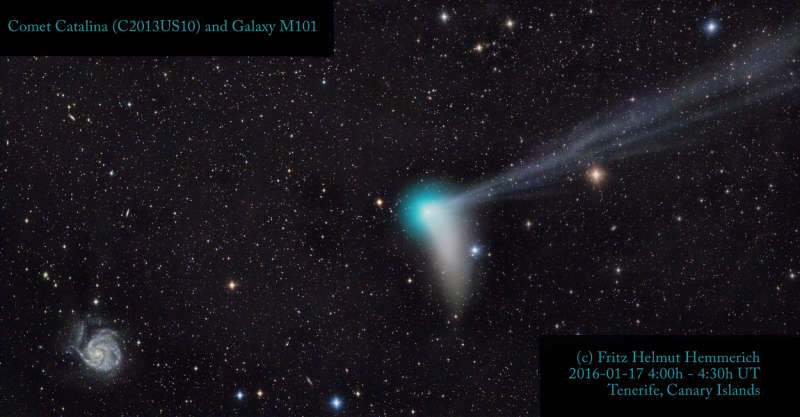Credit & Copyright: Fritz
Helmut Hemmerich
Explanation:
Sweeping through northern skies, Comet Catalina (C/2013 US10) made its
closest approach on January 17, passing about 6 light-minutes
from our fair planet.
Dust and ion tails clearly separated
in this Earth-based view,
the comet is also posed for a
Messier moment, near the line-of-sight
to M101, grand spiral galaxy in Ursa Major.
A cosmic pinwheel
at the lower left, M101 is nearly twice the size of our own
Milky Way galaxy, but some 270 thousand light-centuries away.
Both galaxy and comet are relatively bright, easy targets for
binocular-equipped skygazers.
But Comet Catalina
is now outbound from the inner
Solar System
and will slowly fade in coming months.
This
telescopic two panel mosaic spans about 5 degrees (10 Full Moons)
on the sky.
Authors & editors:
Robert Nemiroff
(MTU) &
Jerry Bonnell
(USRA)
NASA Web Site Statements, Warnings,
and Disclaimers
NASA Official: Jay Norris.
Specific
rights apply.
A service of:
LHEA at
NASA /
GSFC
& Michigan Tech. U.
Based on Astronomy Picture
Of the Day
